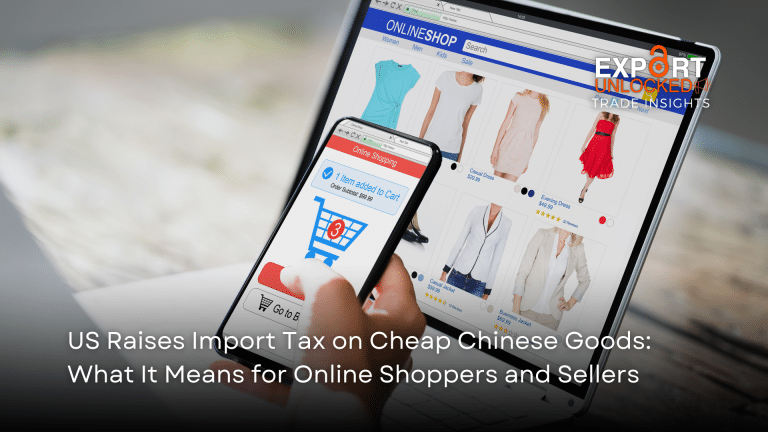
Home » US De Minimis Tariff Change Targets Chinese E-Commerce Imports — Implications for B2B Sellers
US De Minimis Tariff Change Targets Chinese E-Commerce Imports — Implications for B2B Sellers
In a move set to shake the foundations of global e-commerce, the United States has dramatically adjusted its “de minimis” tariff policy, a change with far-reaching implications for consumers, online retailers, and global supply chains.
What Changed?
As of May 14, 2025, the U.S. government has lowered the de minimis tariff on low-value Chinese imports—those worth under $800—from a staggering 120% to 54%. While still significant, the reduced rate is seen as a partial reprieve in the broader context of the ongoing U.S.–China trade war and tightening China to US import tax regulations.
This policy shift targets the booming cross-border e-commerce sector, particularly platforms like Temu, Shein, and AliExpress, which have used the de minimis exemption to ship goods into the U.S. market duty-free and at ultra-competitive prices.
Why Does It Matter?
The de minimis rule has long been a loophole-friendly gateway for international sellers. It allowed packages under $800 to bypass formal customs procedures and import taxes, giving foreign sellers especially those in China, an edge over domestic retailers.
By adjusting the China to US import tax threshold, the U.S. aims to:
Level the playing field for American retailers
Generate more customs revenue
Discourage the explosion of fast-fashion and low-cost imports flooding the U.S. market
Winners and Losers
Winners
U.S.-based retailers and manufacturers: The new tariff reduces unfair competition from ultra-cheap imports.
Logistics and compliance services: More regulation means more demand for support with customs and declarations.
Losers
Chinese e-commerce giants: Shein and Temu, known for ultra-low pricing, now face profit margin pressure and potential price hikes.
Price-sensitive U.S. consumers: Bargain shopping may get pricier, especially for clothing, gadgets, and accessories.
Small U.S. importers: Those reselling Chinese products under the $800 threshold may see reduced viability as China to US import tax changes take effect.
A Sign of a Larger Trend?
This move is not isolated. It forms part of a broader realignment of global trade rules where efficiency is being weighed against fairness and national economic interests. Other countries may follow suit, especially if their own import tax policies are challenged by similar e-commerce flows.
Moreover, it underscores a shift toward tariff enforcement as a strategic economic tool, less about diplomacy, more about data-driven industrial policy, especially in high-volume lanes like China to US import tax routes.
What’s Next?
If Chinese platforms adjust by raising prices or shifting fulfillment centers, the ripple effects will touch millions of online shoppers and thousands of small businesses who rely on fast, cheap imports. Expect tighter scrutiny, more customs paperwork, and a rebalancing of global trade flows.
For e-commerce sellers and logistics firms, the message is clear: adapt to a world of rising trade barriers or risk being left behind.



